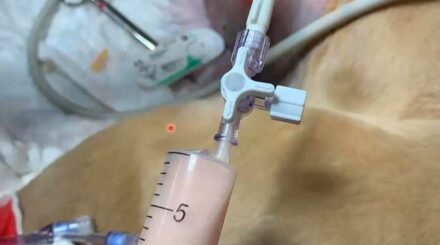Beyond Bald: Diagnosing and Managing Canine Alopecia
Alopecia is a frequent and sometimes perplexing presentation in canine patients, with causes ranging from the mundane to the complex. Recognising specific patterns of hair loss is key to making…
Beyond the stethoscope: Biomarkers in action!
Interpreting cardiac biomarkers can be a powerful addition to your diagnostic toolkit, but knowing when and how to use them is key. In this webinar, Liz will guide you through…
Bitter or Better? Managing negative feedback
For some of us, giving and receiving feedback is one of the most uncomfortable, dreaded and often painful elements of our professional lives. However, even though it seems daunting and…
Blood smear essentials: Unveiling the critical role in haematology
In this webinar, we will review how to approach blood smear examination with a systematic approach and integrate these findings with haematology results. Blood smear examination has the ability to…
Breaking the Cycle: Practical Strategies for Managing Chronic Otitis in Dogs
Chronic or recurrent otitis can be one of the most frustrating conditions to manage in veterinary practice—for both clinicians and clients. When ear disease just won’t resolve, it’s time to…
Breathing Room: Understanding and Managing Pleural Space Disease in Dogs and Cats
This webinar session will cover the pathophysiology, diagnosis, and emergency management options for pleural space diseases, including pleural effusion and pneumothorax. Gain practical knowledge and clinical tips, including numerous tips…
Canine diabetes mellitus: Demystifying a difficult disease
Cases of canine diabetes mellitus can be very challenging. Although diagnosis is often easy to establish, treatment and follow-up can be a nightmare in daily practice. In this lesson, we’ll…
Canine Hyperadrenocorticism
Canine hyperadrenocorticism is a relatively commonly encountered endocrinopathy, and generally presents as a dog with PUPD. It is essential to exclude other causes of PUPD before performing more specific tests…
Canine leishmaniosis
Canine leishmaniosis is not currently endemic in the UK, however, with increasing numbers of dogs being imported from endemic countries, it is now commonly screened for and diagnosed in dogs…
Capnography – Riding the Waves!
Capnography has evolved into an essential component for monitoring anaesthetised patients and capnography is included in the Standards of Mandatory Monitoring with the American Society of Anaesthesilogists and the Association…
Cardiac anaesthesia – Principles not protocols
When faced with a cardiac patient, the key to safe anaesthesia is having the best understanding of the underlying cardiac disease. There’s no such thing as a one protocol fits…
Cardiopulmonary resuscitation (CPR) in practice
Cardiopulmonary arrest is condition best managed with a trained team and an organised workplace. There has been a clear association with using standardised guidelines, training and post-arrest review and improved…
Caring for wildlife casualties in veterinary practice
Would you like to increase your knowledge of caring for wildlife when they present as a casualty at your veterinary practice? Want to learn how to triage wildlife and understand…
Cats and their chat! Making the veterinary journey – Feline fabulous!
This webinar chats all about cats! Communication is a vital part of feline handling and behaviour. In this webinar, I will talk about species-specific communication in the feline species, discuss…
Chemotherapy in a nutshell: Safety, protocol, drug doses & other considerations
Chemotherapy is one of three principal methods for treatment of veterinary cancer patients. Chemotherapy protocols are not only chosen based on the histopathological diagnosis of the neoplasia, but also based…
Chronic hepatitis… Coping with Copper
Chronic hepatitis in the dog can be a diagnostic and therapeutic challenge. The majority of cases of canine chronic hepatitis are idiopathic. The etiology most commonly identified as a cause…
Chronic pain management in dogs and cats
Join us for an insightful webinar on managing chronic pain in small animals. This session will cover crucial topics, including thorough pain assessments using behavioural, physiological, and contextual indicators, emphasising…
Civility – The Facts (An introduction to the importance of civility in practice)
In this webinar, we will explore the core concepts of incivility and consider the impact of inter-team behaviour on individuals, teams, organisations, and the safe delivery of patient care. Based…
CKD or not CKD – Diagnostic challenges and considerations
This is the first of a two-part series on chronic kidney disease (CKD). In this session we will focus on the diagnosis of chronic kidney disease with a special emphasis…
Clot busting: Feline aortic thromboembolism
This webinar will cover the diagnosis and management of feline aortic thromboembolism. Not all owners will want to treat cats that present with this disease, but which cats have a…





















